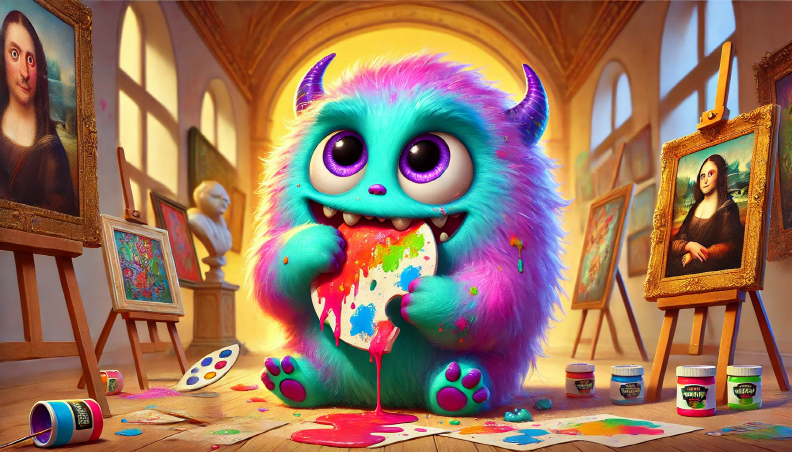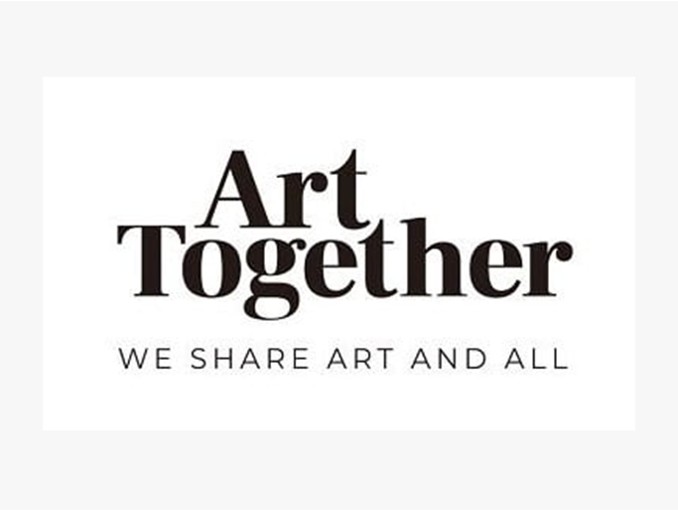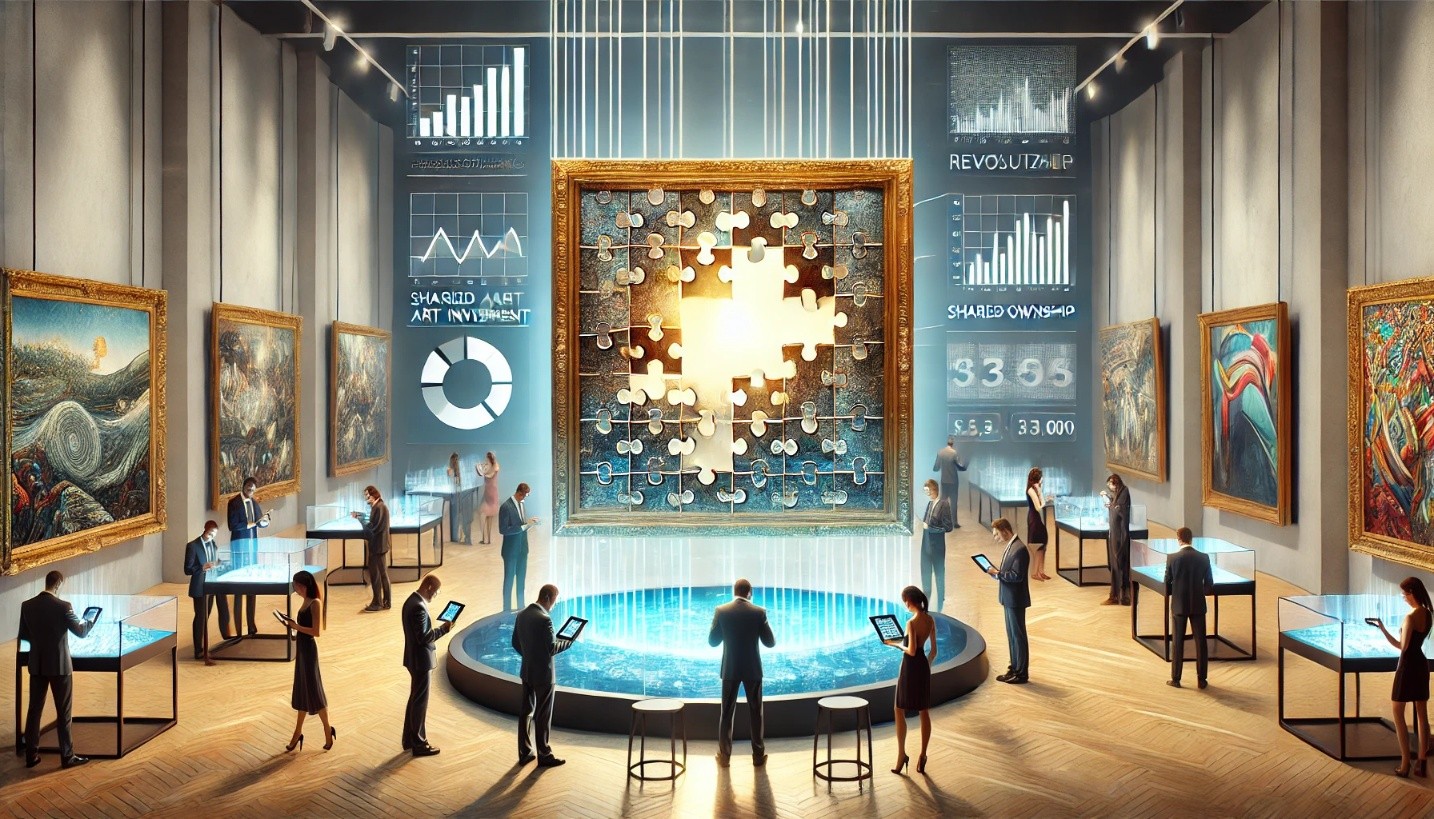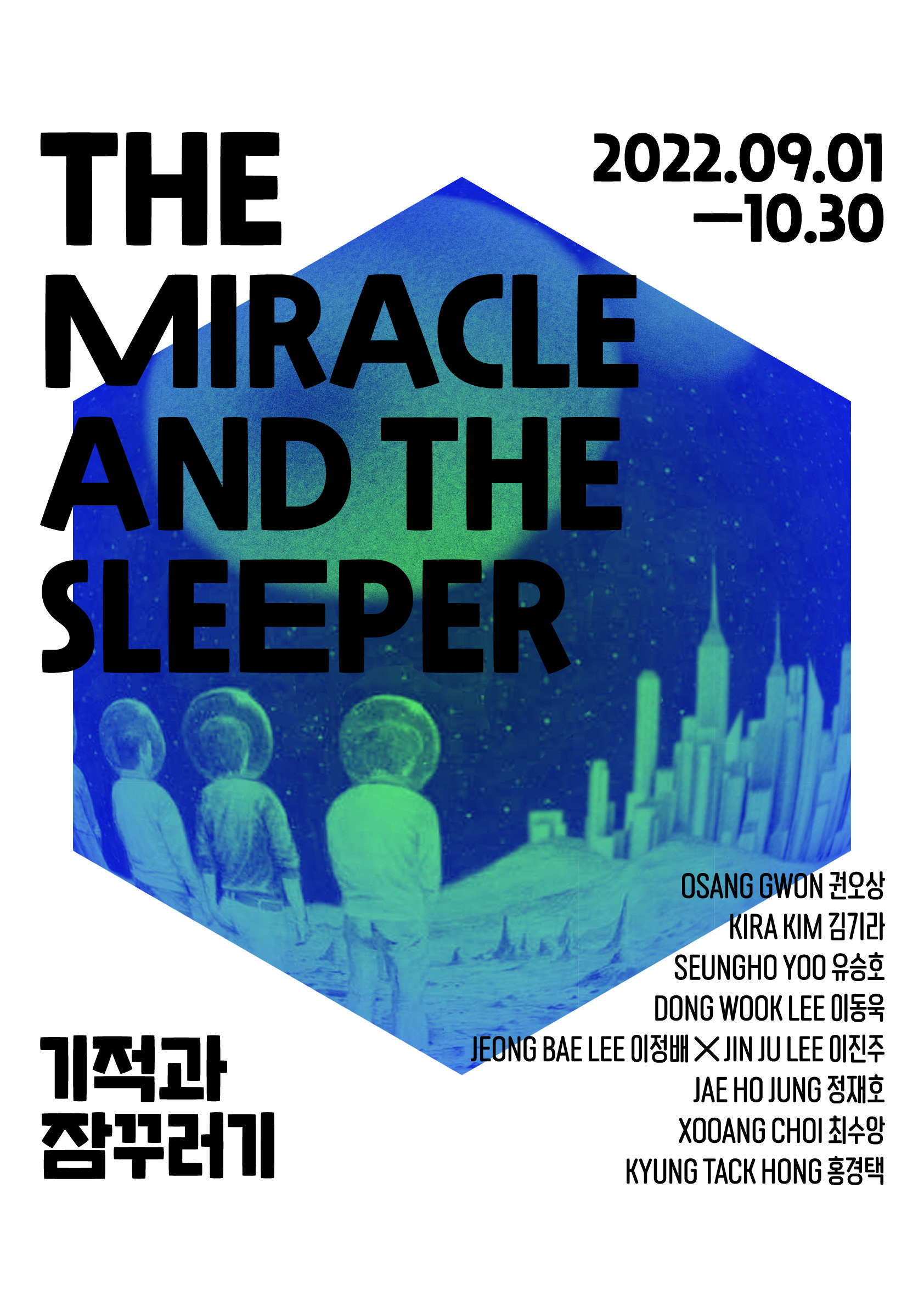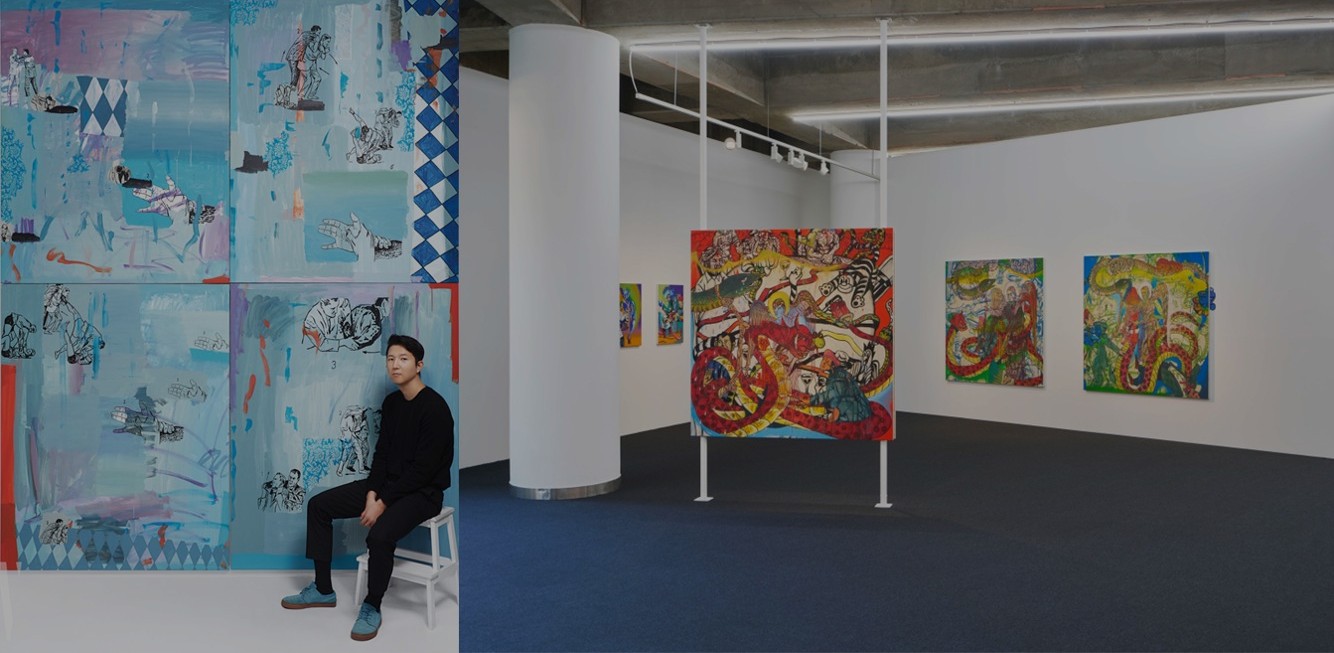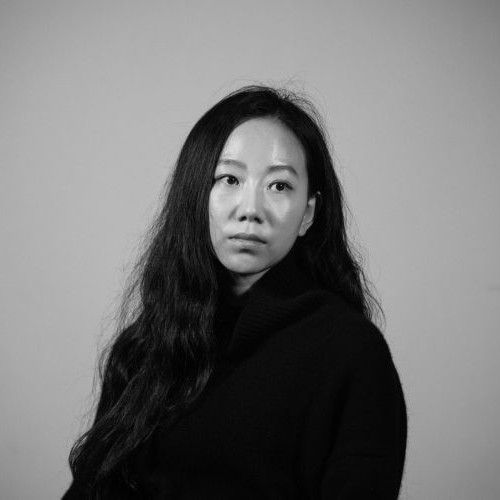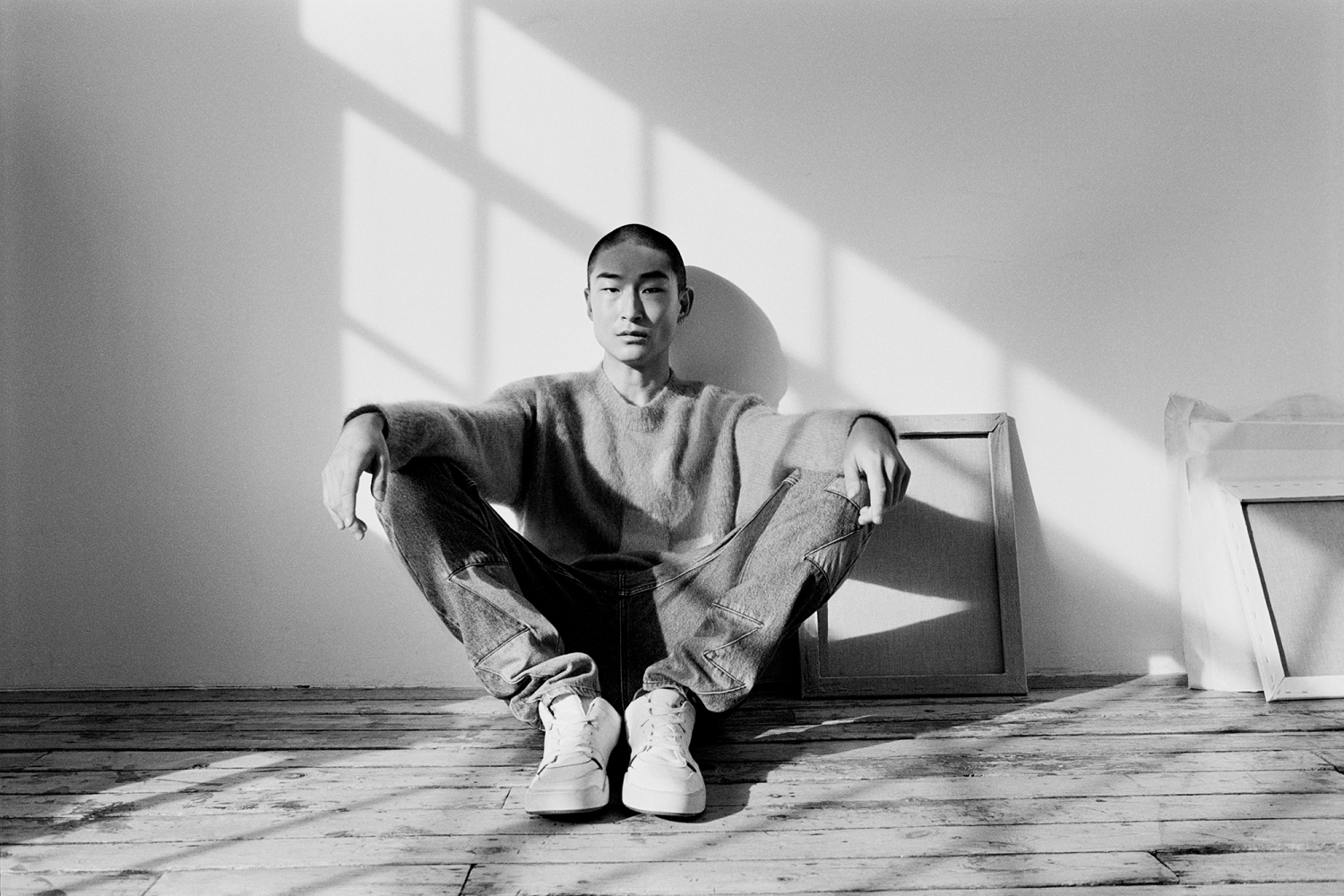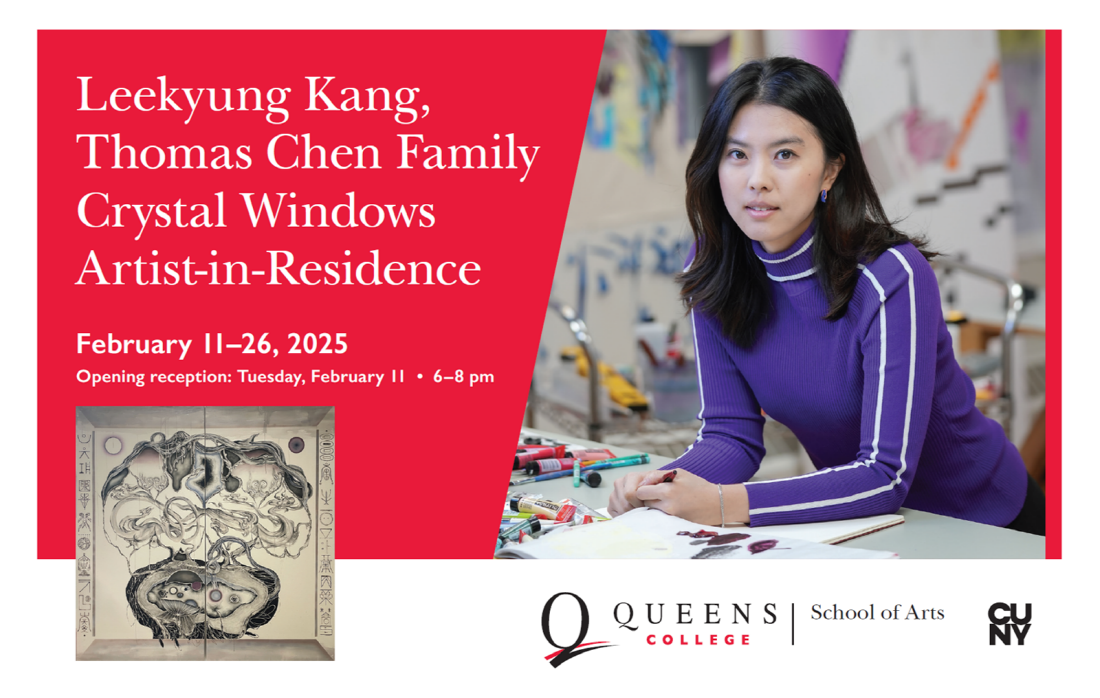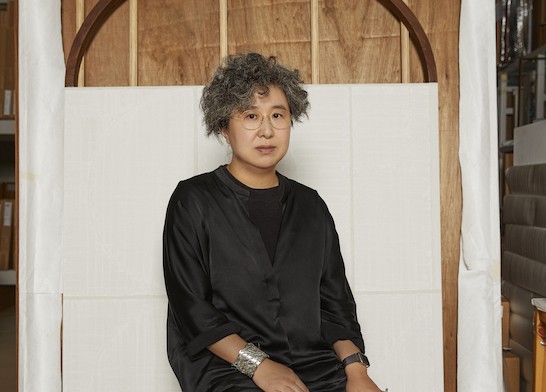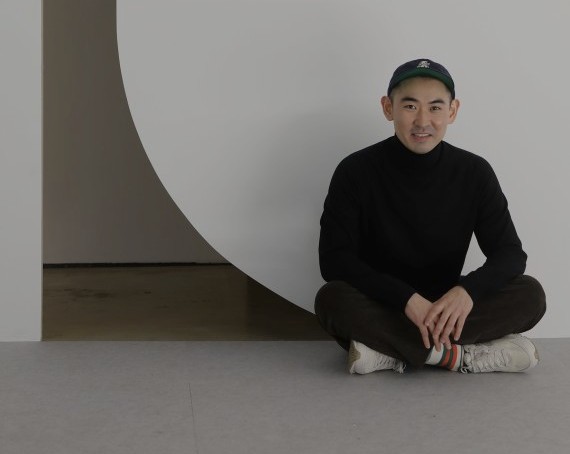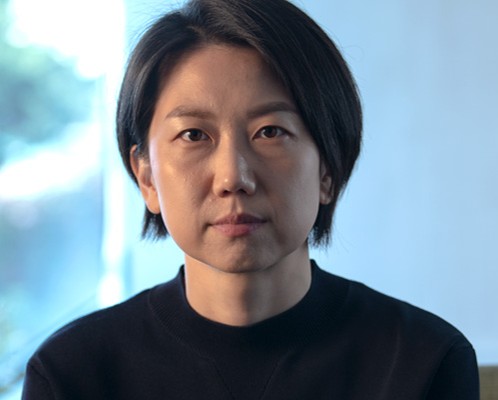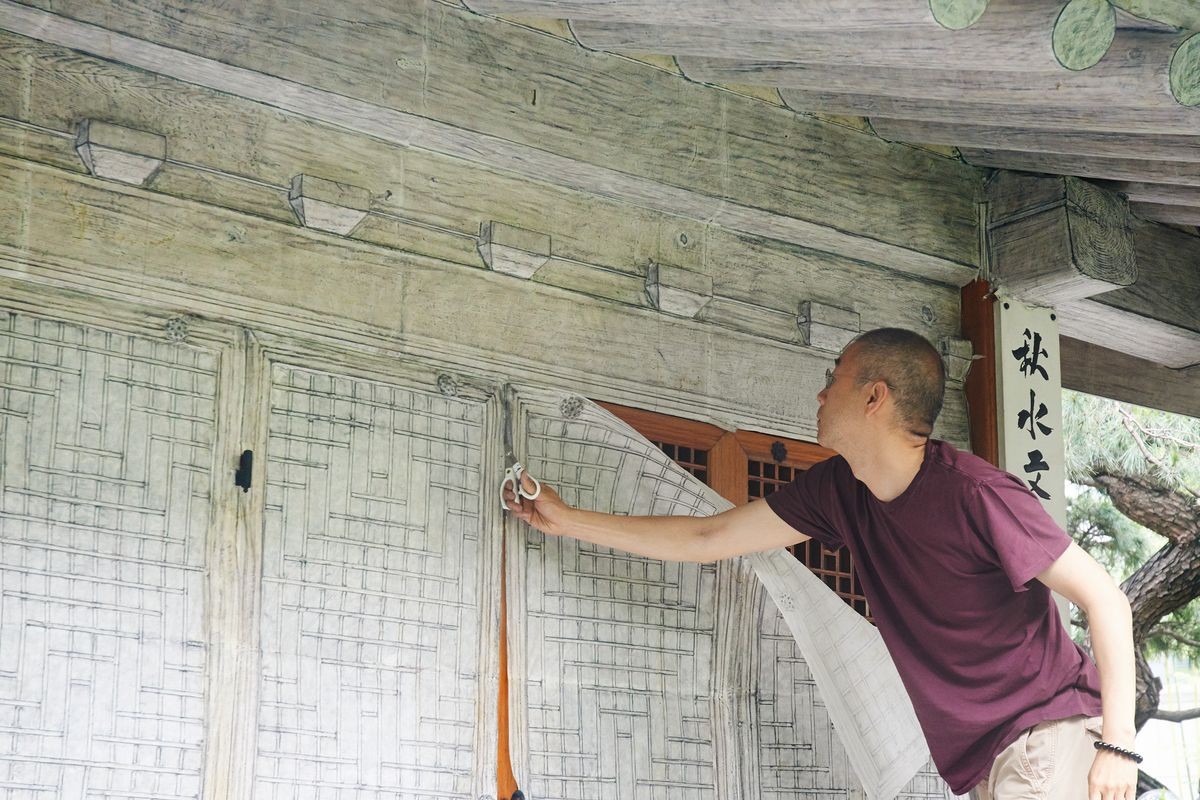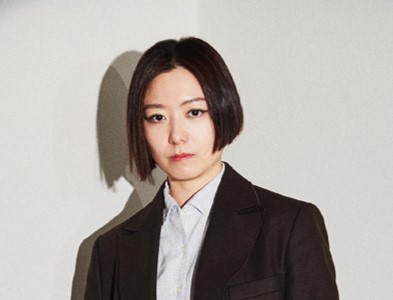Son Donghyun (b. 1980) has been
reinterpreting the styles of East Asian traditional painting from a
contemporary perspective. While traditional painting often embodies an interest
in nature, Son’s work reflects the lives of contemporary figures.
Moreover, the artist reimagines the themes,
subjects, and theories of traditional painting through his own artistic
language, presenting new possibilities for contemporary interpretations of East
Asian art.

Son Donghyun, Munjado-Nike, 2006 ©Son Donghyun
Son Donghyun's early ‘Munjado’ series
reinterprets Munjado, a type of folk painting (minhwa) from traditional Korean
art. Originally created in the late Joseon Dynasty to promote the political
ideology of the ruling class, Munjado in Son’s paintings reveals facets of
today’s capitalist consumer cultures.
The artist adopts the Munjado format, which
blends text and imagery, incorporating logos of contemporary global
corporations like Nike and Coca-Cola. Within these logos, he reconstructs
related imagery, reflecting the realities of modern society.
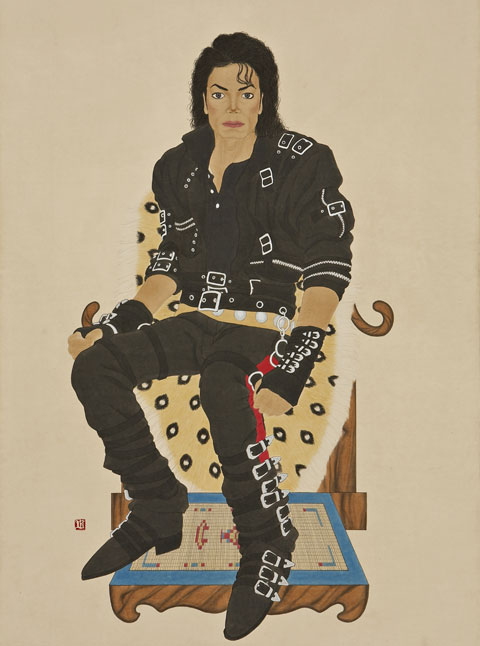
Son Donghyun, Portrait of the King, 2008 ©Son Donghyun
In addition, Son Donghyun has created
Jeonsinsajo (傳神寫照) portraits of iconic figures from pop
culture, such as characters from Hollywood films and Disney animations. The
term ‘jeonsin’ (傳神) refers to expressing the essence or
spirit of a subject through its form, while ‘sajo’ (寫照)
denotes depicting the observed form of a subject.
Son modernizes the aesthetics of
Jeonsinsajo by portraying contemporary figures that symbolize the present era.
His early works in this style captured images of fictional characters created
by the media. Starting in 2008, however, his portrait series ‘Portrait of the
King’ depicts Michael Jackson, hailed as the "King of Pop" and a
monumental figure in popular culture, in the traditional format of eojin (royal
portraits).
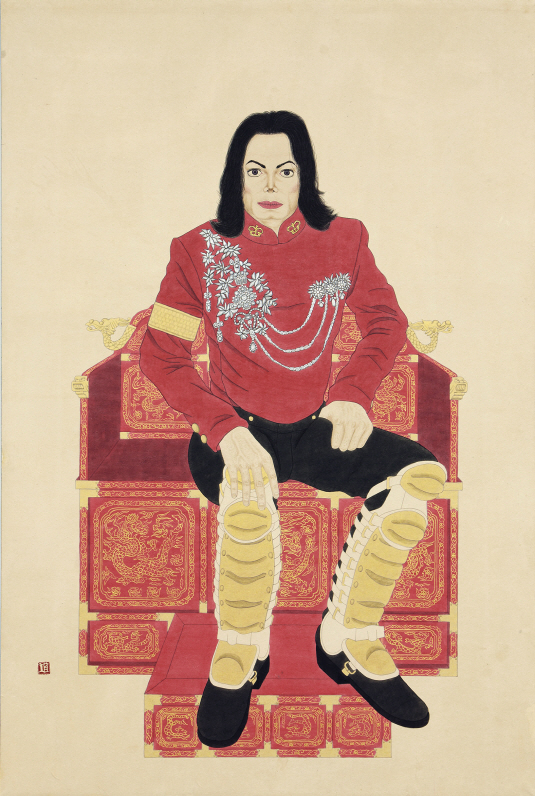
Son Donghyun, Portrait of the king, 2008 ©Son Donghyun
Son Donghyun believed that Michael Jackson,
as a figure, could not be confined to a single definitive image. To explore
Jackson's multifaceted persona, Son decided to create a series of 40
chronological portraits, each inspired by the singles released separately in
the U.S. market.
The artist meticulously analyzed Jackson’s
music videos to capture his full image for each single. For songs without music
videos, Son referred to album cover photos, and in the absence of album photos,
he studied promotional images from the corresponding release period.
In addition to capturing Jackson’s changing
appearance over the years, Son distinguished the figure’s base (or throne)
depending on the era, with 1989 marking a pivotal point when Jackson began
being widely referred to as the “King of Pop.”
Portraits depicting Jackson prior to 1989
feature him seated on a wooden chair draped with leopard skin, with his feet
resting on a hwamunseok (a traditional Korean straw mat), a composition
reminiscent of Joseon-era scholar portraits. In contrast, post-1989 portraits
show Jackson seated on an eojwa (a royal throne used by Korean kings),
reflecting his elevated cultural status during this period.
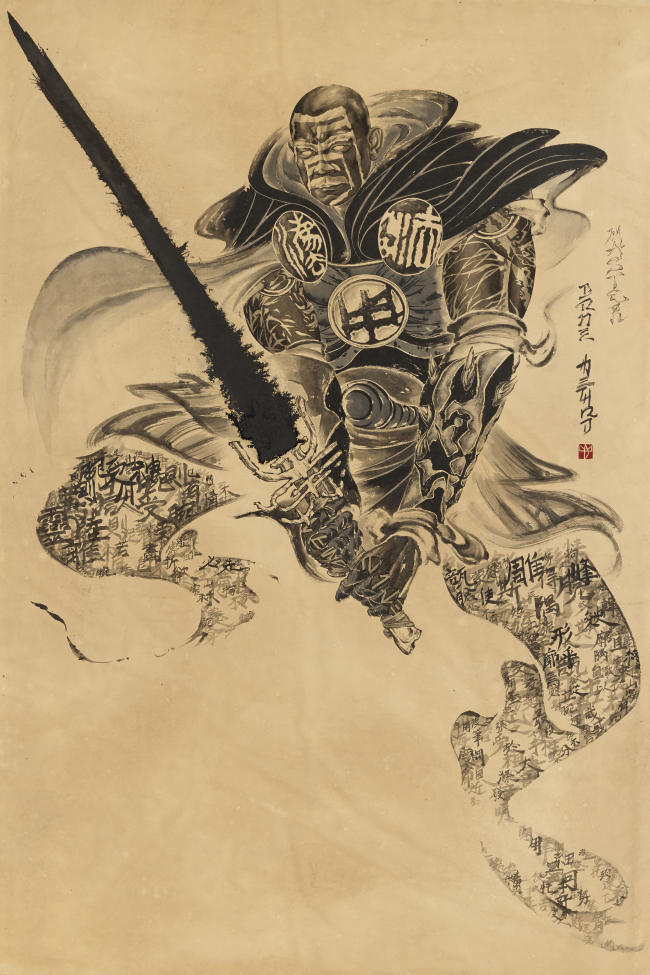
Son Donghyun, Master Bone Method, 2015 ©SONGEUN Art and Cultural Foundation
Since 2014, Son has shifted his focus from
depicting specific figures to creating new personas by translating the themes,
subjects, and principles of traditional East Asian painting into the
characteristics and appearances of imaginary individuals. This transition began
with his 2014 solo exhibition, 《PINE TREE》, where he showcased portraits of characters personifying pine
trees. Drawing on the symbolic meanings and qualities of pine trees, which
frequently appear as subjects in traditional painting, Son reimagined them as
anthropomorphized figures.
In the following year, Son participated in
the 15th SONGEUN Art Award Exhibition, where he introduced a series based on
Xie He's Six Principles of Painting (繪畫六法: six points
of consideration in the practice of painting). Son transformed each of the six
principles into unique personas, reinterpreting their artistic concepts as
martial arts skills possessed by warrior-like characters and portraying them
with appearances inspired by contemporary culture.
For instance, in Master Bone
Method (2015), which personifies the principle of Bone Method in the
Use of the Brush (骨法用筆), the figure is depicted as a
warrior clad in armor inscribed with the words "骨法用” (Bone Method). The character wields a sword with a hilt engraved
with the word “筆” (brush), emitting streams of ink,
symbolizing their mastery of brush technique.
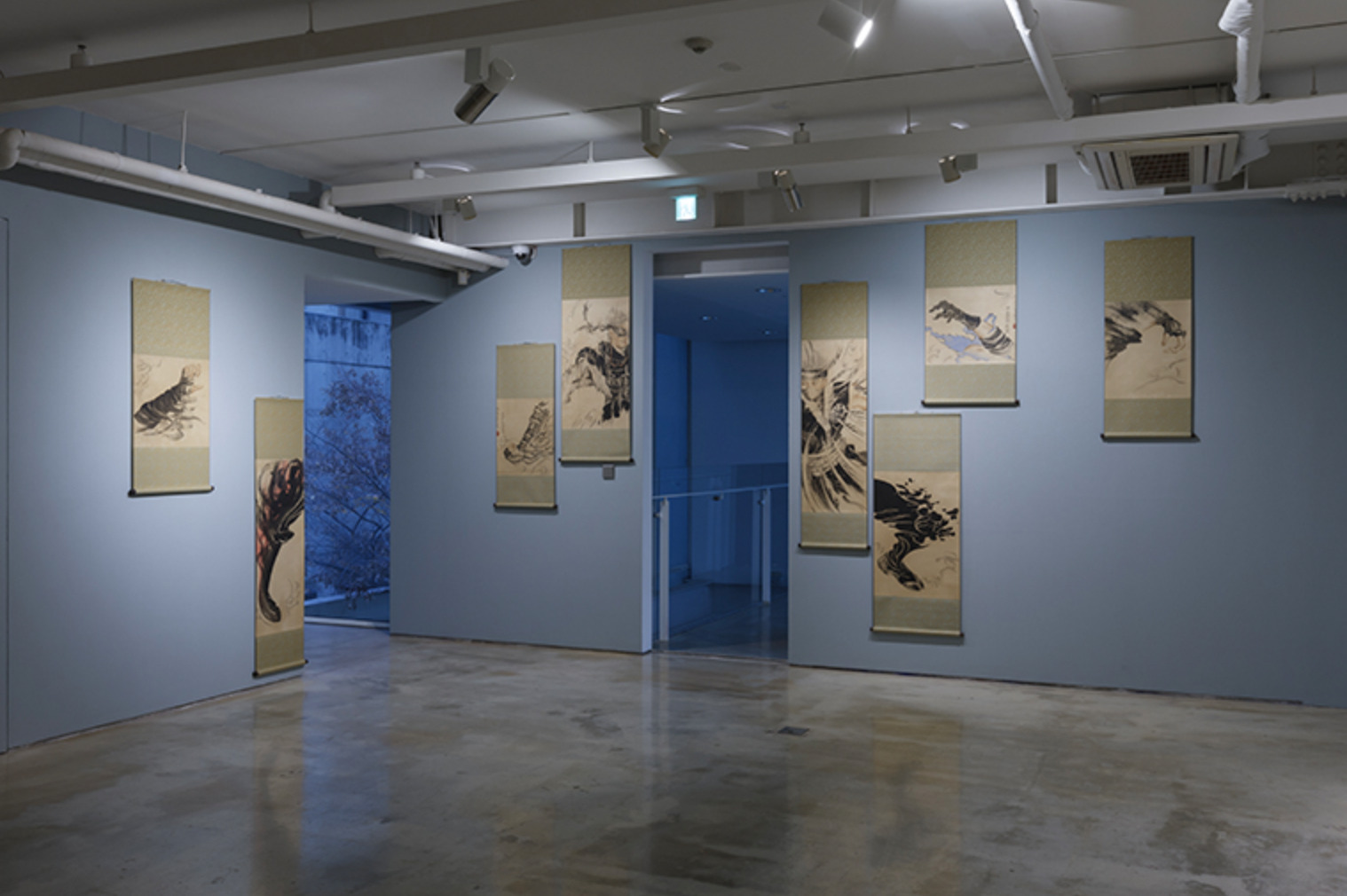 Son
Donghyun, Mater Division Planning, 2015 ©SONGEUN Art and
Cultural Foundation
Son
Donghyun, Mater Division Planning, 2015 ©SONGEUN Art and
Cultural FoundationMeanwhile, in Master Division
Planning (2015), which personifies the principle of Division Planning
(經營位置, referring to skillful arrangement of composition
and spatial positioning), the character’s body is divided across multiple
hanging scrolls. While the scrolls collectively form a single, unified figure,
they can be rearranged freely, allowing for endless compositional
variations.
The artist explained that if Division
Planning were a person, it would have the ability to transcend time and space,
teleporting instantaneously. This idea is visually reflected in the painting's
details, such as motion lines and cloud-like transitions around the figure,
evoking the teleportation effects commonly seen in comic books.

Son Donghyun, Battlescape Z(The Cell Game), 2013 ©Son Donghyun
Meanwhile, Battlescape Z (The Cell
Game) (2013), follows the techniques and aesthetics of traditional
East Asian landscape painting (sansuhwa). The artist reinterpreted the
backgrounds of individual battle scenes from Akira Toriyama’s manga
Dragon Ball, seamlessly connecting them into a horizontally
extended composition that narratively unfolds as a dynamic landscape painting.
This approach aligns with traditional sansuhwa, which often encapsulates
various times and spaces within a single frame.
This work also connects to Son’s earlier
‘Island’ series (2010), in which he painted scenes from blockbuster movies
across folding screens. Each panel of the screen functioned as both an
independent composition and part of a larger whole when fully unfolded.
Considering the folding screen’s unique characteristics, the artist sought out
other formats with similar qualities, eventually leading to the scroll-based
Battlescape Z (The Cell Game).
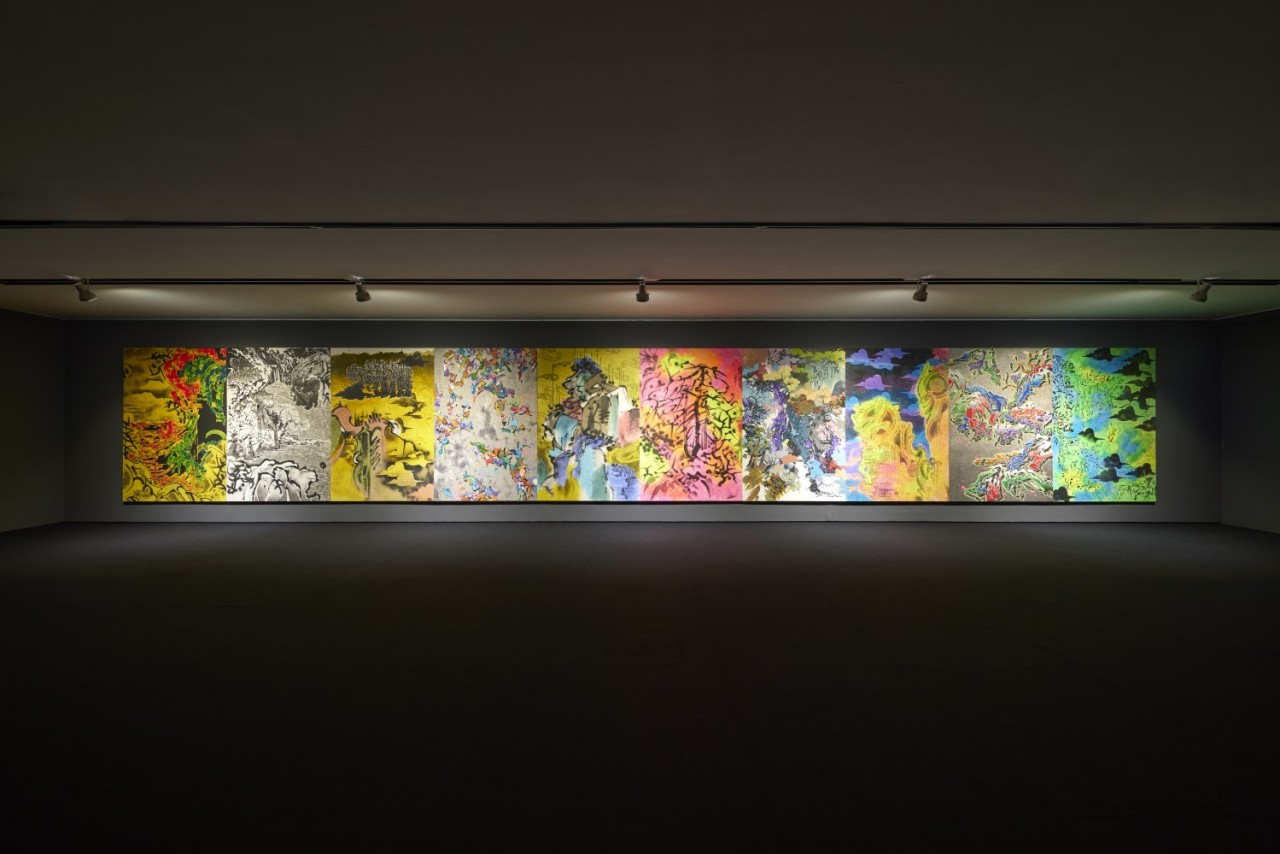 Son
Donghyun, Early Spring, 2020-2021, Installation view of 《Early Spring》 (Perigee Gallery, 2021) ©Perigee
Gallery
Son
Donghyun, Early Spring, 2020-2021, Installation view of 《Early Spring》 (Perigee Gallery, 2021) ©Perigee
GallerySon Donghyun's interest in and exploration
of sansuhwa (East Asian landscape painting) persisted in his later works. In
his 2015 solo exhibition 《Paper in Ink》, he showcased sumukhwa pieces created solely with paper and ink.
This exploration reached a new level in his 2021 solo exhibition 《Early Spring》 at Perigee Gallery, where he
presented large-scale paintings that fully embraced the framework of
traditional sansuhwa.
The centerpiece of the exhibition, the
large-scale painting Early Spring (2020–2021), comprised ten
canvases that filled an entire gallery wall. It was inspired by Early
Spring, an 11th-century work by Chinese North Song painter Guo Xi,
renowned for its masterful representation of the unique perspective and
composition characteristic of East Asian sansuhwa. Son approached this
canonical work from his own contemporary viewpoint, reinterpreting it in his
distinct style.
To achieve this, Son divided the space
constructed by the three-distance technique (method of creating depth in East
Asian landscape painting) across ten separate canvases. Son makes use of
various techniques to show the textures realized through intricate brushwork,
including stencil work, rubbing, graffiti, and cartoon style. As a result, the
mountain peaks and pine trees that once created a rigid hierarchy on a single
canvas are replaced in the divided canvases with geometric, humorous
contemporary designs.
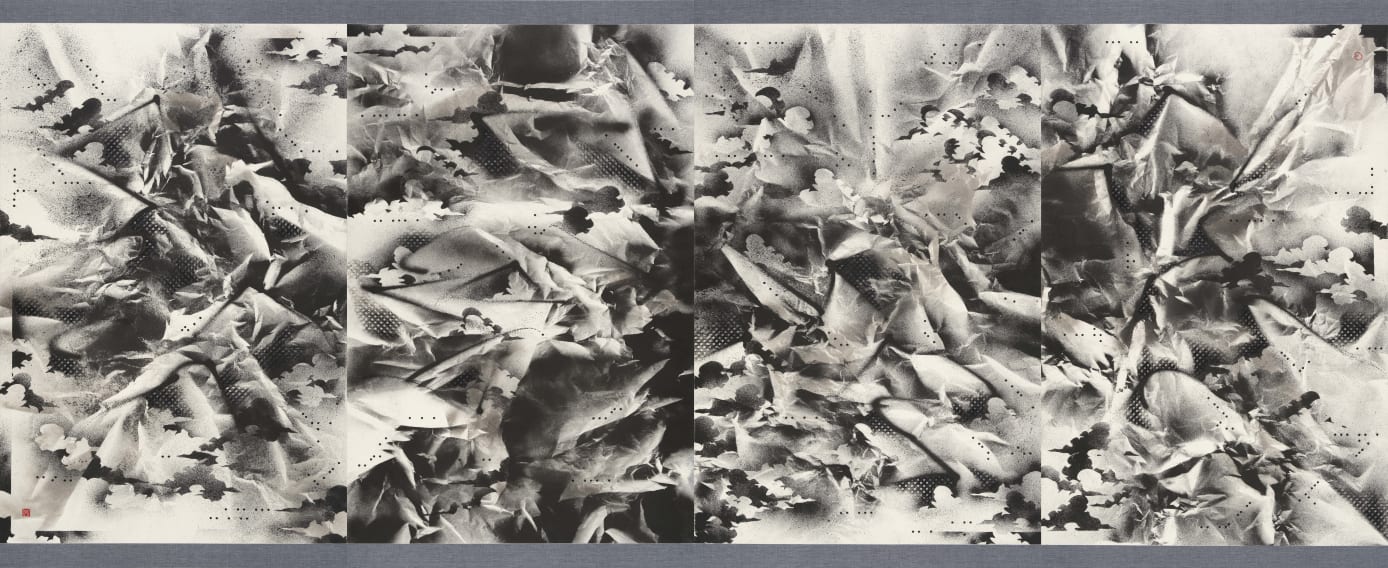 Son
Donghyun, 3PO6, 2021-2022 ©Gallery2
Son
Donghyun, 3PO6, 2021-2022 ©Gallery2Son Donghyun naturally began to focus more
on the 'materials' rather than the subject of the painting while creating
Early Spring, and introduced freer and more spontaneous
artistic interventions into his work. His three-part exhibition project 《Paper in Ink》, which took place from 2015 to
2022, shows his exploration and experimentation with the materials of the
painting.
In the first part of the project in 2015,
he presented landscape paintings created using only paper and meok (traditional
black ink). In the second part, shown in 2020, he created works using both ink
and various types of ink. In the final part in 2022, he focused on works
centered around paper. For the last project, which focused on 'paper', he
presented experimental ink landscapes that utilized the characteristics of
hanji (traditional Korean paper).
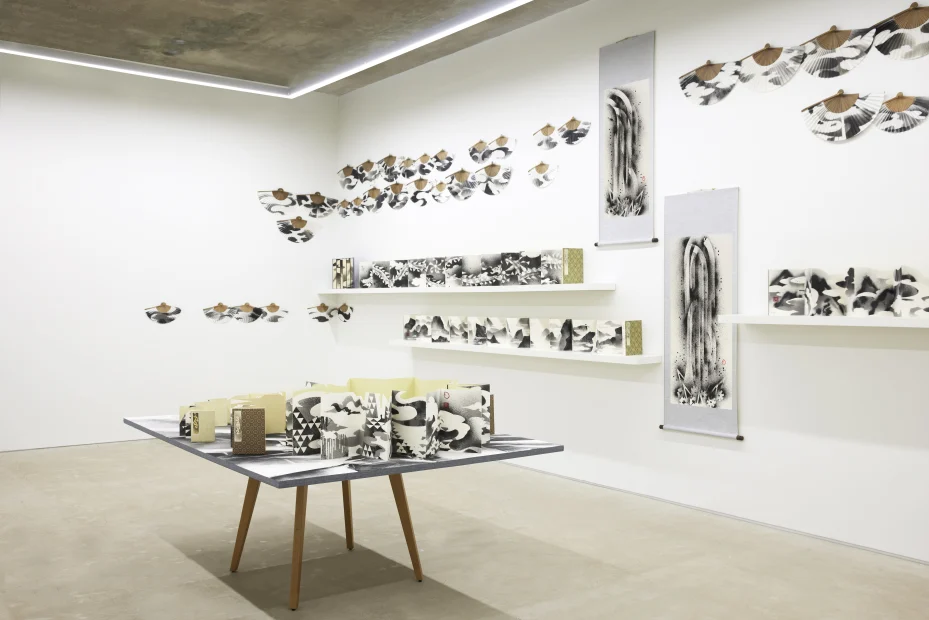 Installation view
of 《Paper in Ink III》 (Gallery2, 2022) ©Gallery2
Installation view
of 《Paper in Ink III》 (Gallery2, 2022) ©Gallery2The artist emphasized the characteristics
of hanji, which, unlike today’s paper, can regain its original flat shape when
water is applied, and has the physical property of being able to stand on its
edges when folded. To highlight these traits, he used only meok, which adheres
best to hanji. He also noticed that no information about paintbrushes, which
are necessary for paintings, is provided in any captions or labels, and
interpreted this as an open option to draw landscapes without using
paintbrushes.
The artist crumples up hanji and sprays
meok with a spray or stencil to express the rugged mountain terrain, and then
sprays water to make the paper flat after the ink is completely dried. He also
used toy train rails to draw waterfalls and expressed dragons and dark clouds
on folded paper books and folding fans.
Rather than reinterpreting the traditional
form of landscape painting, the artist tried to reflect the free spirit of old
landscape painters. The artist, considering that painting landscapes may have
been a pastime enjoyed by scholars, extended this thought by using various
materials and techniques. This intention is reflected throughout the
exhibition. One example is the depiction of a waterfall flowing down with
dragons freely swimming, presented through multiple mounted works.
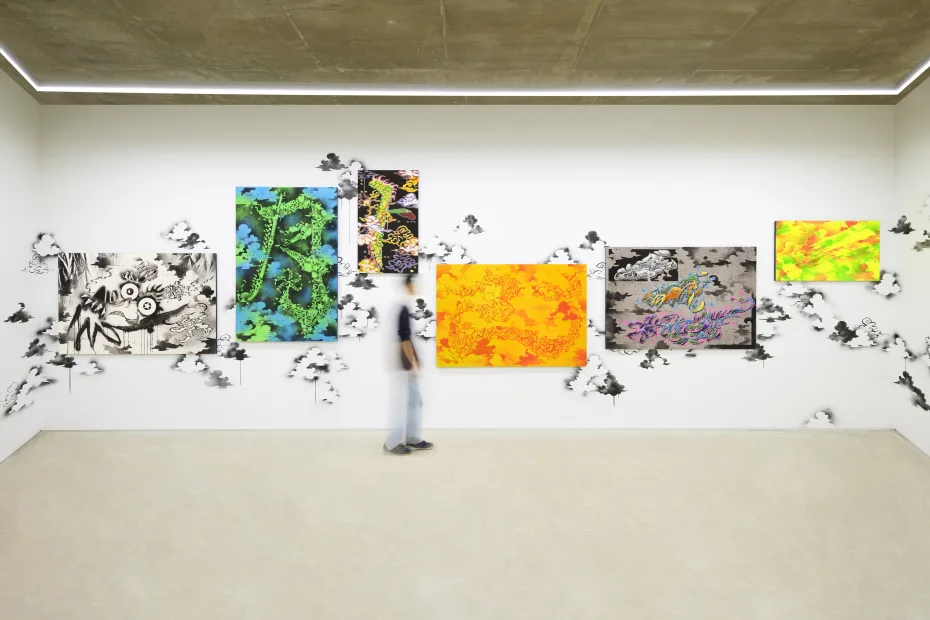 Installation view
of 《Yong Ryong》 (Gallery2, 2024) ©Gallery2
Installation view
of 《Yong Ryong》 (Gallery2, 2024) ©Gallery2And in his solo exhibition 《Yong Ryong》 held at Gallery2 last year, Son
Donghyun showcased a comprehensive display of his past artistic explorations
and experiments. In this exhibition, Son focused on the traditional painting
subjects he had explored, as well as popular images, and further concentrated
on the style of Munjado, a form of painting that incorporates text.
For this exhibition, the space has shifted
to munjado of the Sino-Korean character Ryong (龍: the
dragon of the Orient), singularly analyzed and deconstructed in the various
radicals as the character appears in the jajeon (字典:
dictionary of chinese characters), imaginatively expositing into painterly
spaces. Furthermore, the artist’s choice of modern materials such as acrylic
and other inks, used with traditional sumuk (水墨)
ink-wash techniques, English typographic graffiti methods, and mundane
object-stencils add a complex layer that demarks and unites the space.
The image of the dragon, captured in
logographical form of the calligraphic 龍, attached from
head to tail in radical-form, as well as the woon (雲-cloud)
on the nearby walls and fans populate the space as enriching, complementary
elements to the space.
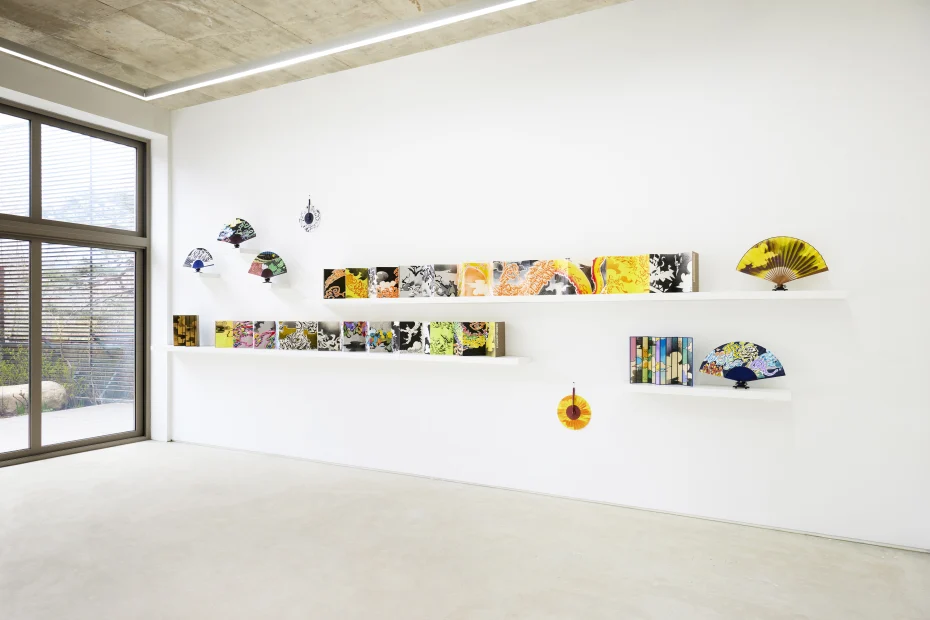 Installation view
of 《Yong Ryong》 (Gallery2, 2024) ©Gallery2
Installation view
of 《Yong Ryong》 (Gallery2, 2024) ©Gallery2In this way, Son Donghyun has continuously explored the methodologies of East Asian traditional painting and the spirit of ancient literati, presenting new possibilities for contemporary painting. His works illuminate and experiment with concepts and media from East Asian painting that hold cultural and art historical significance, bringing them into the present and establishing a unique position in both domestic and international art history.
“As always, rather than any specific goal or dream, I think I will just continue to show new works based on whatever subject I find interesting next. Like the painters of the past who were endlessly free while painting, I also want to express my thoughts freely.” (Son Donghyun, National Registered Cultural Heritage Interview, April 28, 2022)
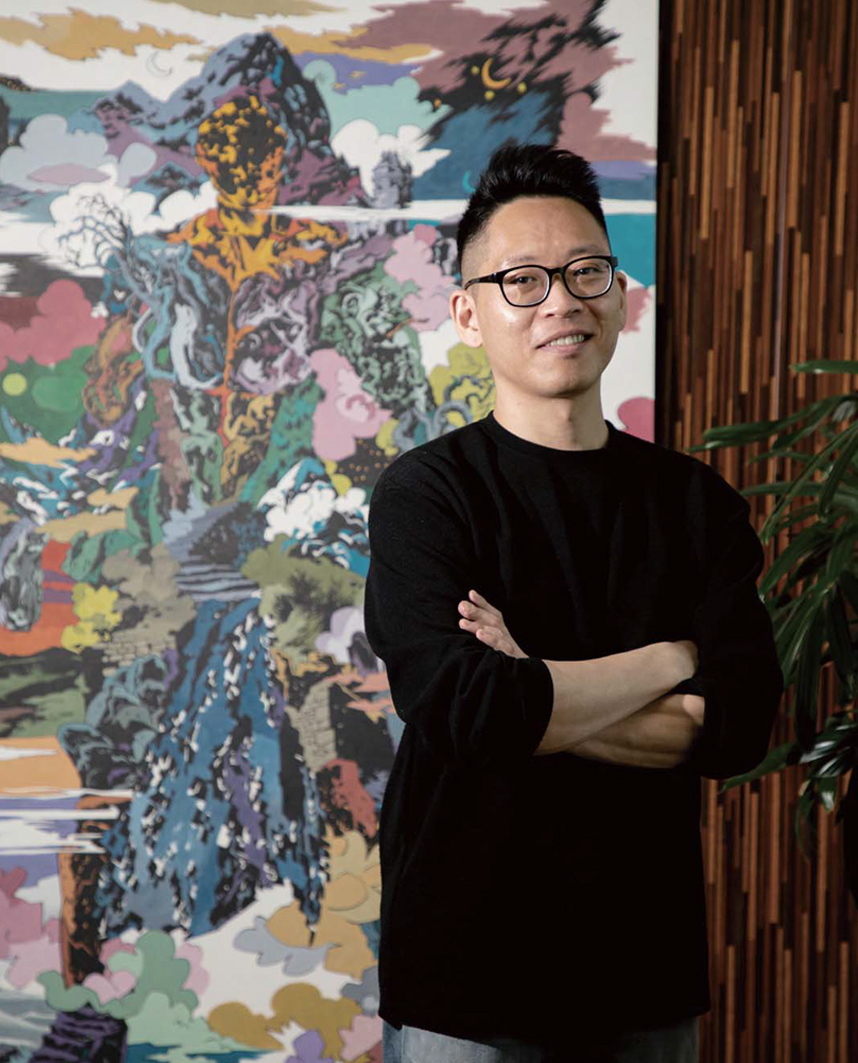 Artist Son
Donghyun ©National Registered Cultural Heritage
Artist Son
Donghyun ©National Registered Cultural HeritageSon Donghyun graduated from the Department
of Eastern Painting at Seoul National University and completed a master’s
course at its graduate school. He began his artistic career with the group
exhibition 《Funny Funny IV》 at
Gallery Sejul (Seoul, Korea) in 2005, and gained recognition starting with his
solo exhibition 《Pa-Ap Icon: 波狎芽益混》 at Art Space HUE (Seoul, Korea) in 2006.
His recent solo exhibitions include 《Yong Ryong》 (Gallery2, Seoul, 2024), 《Paper in Ink III》 (Gallery2, Seoul, 2022), 《Early Spring》 (Perigee Gallery, Seoul,
2021), 《PINE TREE》 (Space Willing
N Dealing, Seoul, 2014), and more. He has also participated in group
exhibitions at various art institutions, including the National Museum of
Modern and Contemporary Art (Seoul, Korea), Seoul Museum of Art (Seoul, Korea),
Horim Museum (Seoul, Korea), DOOSAN Gallery (New York, USA), and Aando Fine Art
(Berlin, Germany).
In 2017, He received the ‘Today’s Young
Artist Award’ from the Ministry of Culture, Sports and Tourism and the grand
prize at the ‘15th SONGEUN Art Awards’ in 2015. His works are part of the
collections at various institutions, including the Seoul Museum of Art, the
National Museum of Modern and Contemporary Art, and the SONGEUN Art and
Cultural Foundation.
References
- 국립현대미술관, MMCA 작가와의 대화 | 손동현 작가 (National Museum of Modern and Contemporary Art, Korea (MMCA), MMCA Artist Talk | Son Donghyun)
- 조선일보, 한 새파란 붓의 진지한 발칙 – 임근준, 2008.11.18
- 다아트, [더 갤러리 (50) ‘손동현: 하더, 베터, 패스터, 스트롱거’] SF영화 주인공을 동양화 정면초상으로 그리다 – 이문정, 2020.08.13
- 국립현대미술관, 손동현 | 이른 봄 | 2020-2021 (National Museum of Modern and Contemporary Art, Korea (MMCA), Son Donghyun | Early Spring | 2020-2021)
- 국가유산청, 먹으로 그려내는 무한한 상상력, 2022.04.28
- 갤러리2, 손동현 (Gallery2, Son Donghyun)
- 갤러리2, 용 룡 (Gallery 2, Yong Ryong)



